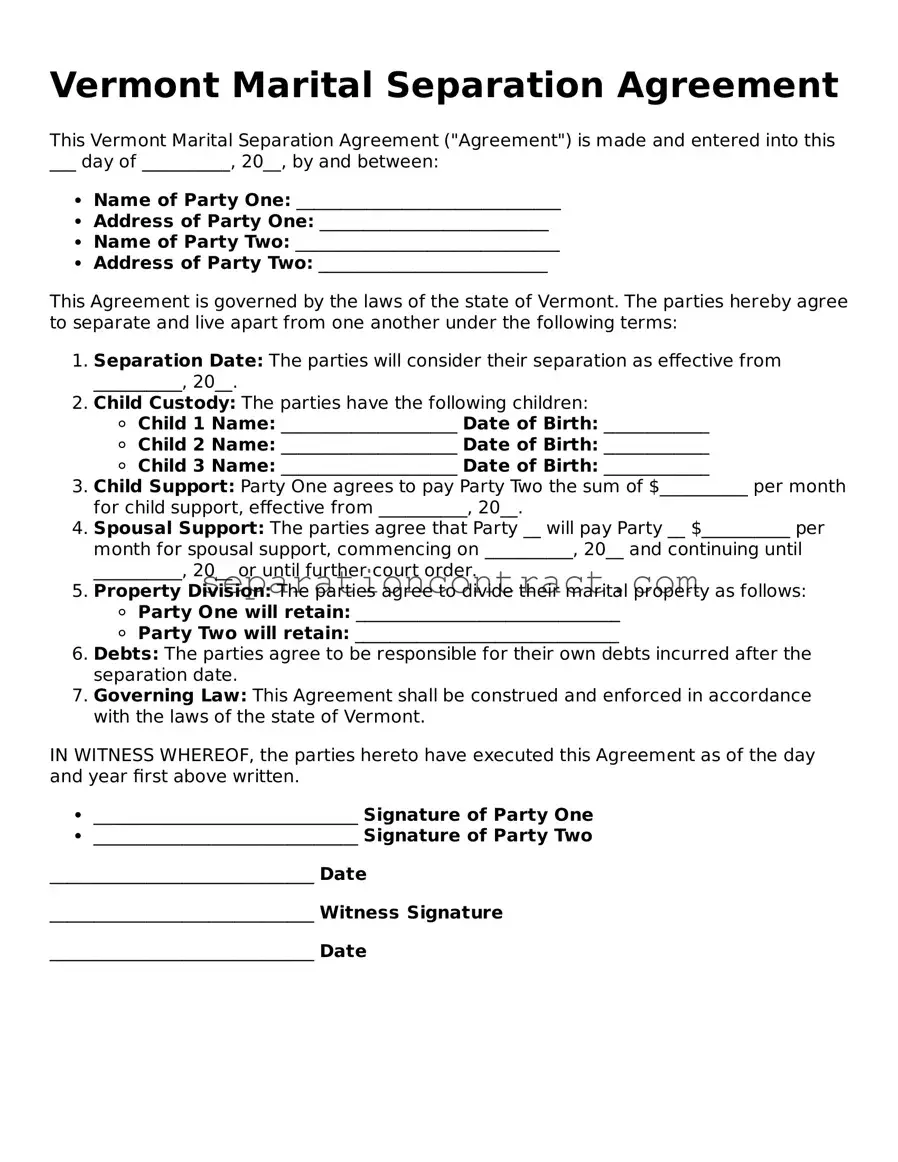Filling out the Vermont Marital Separation Agreement form can be a daunting task. Many individuals make common mistakes that can lead to confusion or even legal issues down the line. Understanding these pitfalls can help ensure a smoother process.
One frequent mistake is not including all necessary information. It’s essential to provide complete details about both parties, including full names, addresses, and any children involved. Omitting this information can lead to delays or complications in the agreement’s approval.
Another common error is failing to clearly outline property division. The agreement should specify how assets and debts will be divided. If this section is vague or incomplete, it may result in disputes later on. Clarity is key to avoiding misunderstandings.
People often neglect to address spousal support. If one spouse will be receiving or paying alimony, this must be explicitly stated in the agreement. Leaving this out can create financial strain and resentment in the future.
Additionally, not considering child custody and support arrangements is a significant oversight. Parents must detail their custody plans and any child support obligations. This ensures that both parties understand their responsibilities and helps protect the best interests of the children.
Some individuals make the mistake of not reviewing the agreement thoroughly before signing. It’s crucial to read through the entire document to ensure that all terms are understood and acceptable. Rushing through this step can lead to agreeing to unfavorable terms.
Another mistake involves failing to seek legal advice. While it may seem tempting to fill out the form without assistance, consulting with a legal expert can provide valuable insights. They can help clarify complex issues and ensure that the agreement complies with Vermont law.
People sometimes forget to keep copies of the signed agreement. After finalizing the document, it’s important to retain copies for personal records. This can be essential for future reference or if disputes arise.
Moreover, not updating the agreement when circumstances change is a common oversight. Life events such as job changes, relocations, or changes in financial status may necessitate revisions to the agreement. Staying proactive about updates can prevent future complications.
Finally, overlooking the importance of notarization can lead to issues. In Vermont, having the agreement notarized can add an extra layer of legitimacy. This step is often overlooked, but it can help in enforcing the agreement if disputes arise later.
